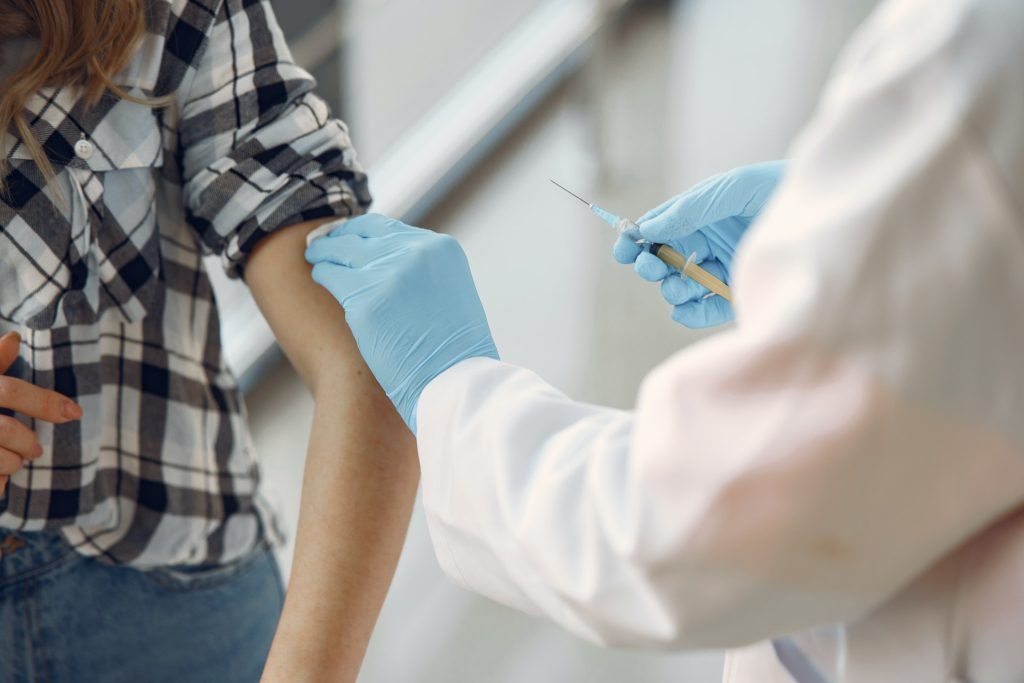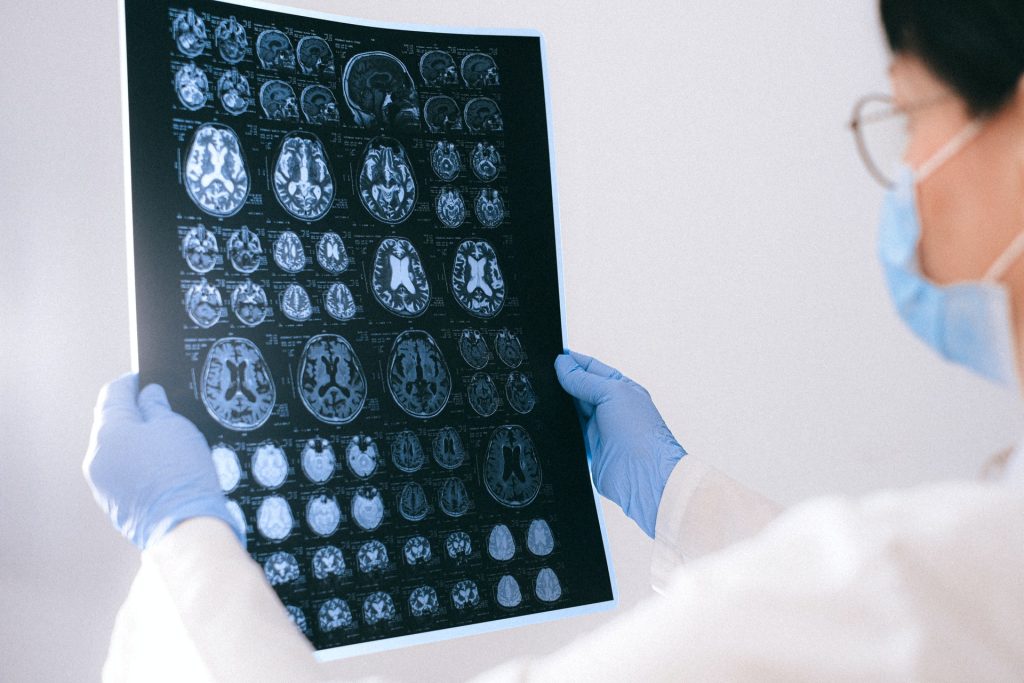Why Most People in South Africa Can’t Get the Shingles Vaccine

By Catherine Tomlinson
The only shingles vaccine on the market in South Africa was discontinued last year. A newer and better vaccine is being used in some other countries, but has not yet been registered in South Africa, though it can be obtained by those with money who are willing to jump through some hoops.
Shingles is a common and painful condition that mostly affects the elderly and people with weakened immune systems. It generally appears with a telltale red rash and cluster of red blisters on one side of one’s body, often in a band-like pattern.
“Shingles is pretty awful to get – it’s extremely painful, and some people can get strokes, vision loss, deafness and other horrible manifestations as complications,” said infectious disease specialist Professor Jeremy Nel. “Shingles really is something to avoid, if at all possible,” he added.
One way to prevent the viral infection is by getting vaccinated against it. But while two vaccines against shingles have been developed and broadly used in the developed world, neither of these are currently available in South Africa.
Two vaccines
Zostavax, from the pharmaceutical company MSD, was the first vaccine introduced to prevent shingles. It was approved for use in the United States in 2006 and in South Africa in 2011. It is 51% effective against shingles in adults over 60.
A more effective vaccine, Shingrix, that is over 90% effective in preventing shingles was introduced by GlaxoSmithKline (GSK) in the United States in 2016. It is not yet authorised for use in South Africa, but GSK has submitted paperwork for approval with the South African Health Products Regulatory Authority (SAHPRA), said the company spokesperson, Kamil Saytkulov.
The superior protection offered by Shingrix compared to Zostavax quickly made it the dominant shingles vaccine on the market. As a result, MSD discontinued the production and marketing of Zostavax. MSD spokesperson Cheryl Reddy said Zostavax was discontinued globally in March 2024. Before then, the vaccine was sold in South Africa’s private healthcare system for about R2 300, but it was never widely available in government clinics or hospitals.
No registered and available vaccine
Since Zostavax has been discontinued and Shingrix remains unregistered, the only way to access a vaccine against shingles in South Africa is by going through the onerous process of applying to SAHPRA for a Section 21 authorisation – a legal mechanism that allows the importation of unregistered medicines when there is an unmet medical need.
“Access will only be available to those who are able to get Section 21 approval” and “this is a costly and time-consuming process, requiring motivation by a doctor,” said Dr Leon Geffen, director of the Samson Institute For Ageing Research.
The cost of the two-dose Shingrix vaccine imported through Section 21 authorisations is currently around R15 600, said Dr Albie de Frey, CEO of the Travel Doctor Corporation.
People who do go through the effort of getting Section 21 authorisation typically have to pay this price out of their own pockets.
“Shingrix is not covered [by Discovery Health] as it is unregistered in South Africa and is therefore considered to be a General Scheme Exclusion,” Dr Noluthando Nematswerani, Chief Clinical Officer at Discovery Health, told Spotlight.
The Department of Health did not respond to queries regarding whether Section 21 processes are being pursued for priority patients in the public sector or whether there has been any engagement with GSK regarding the price of this product.
People who receive organ transplants, for example, should be prioritised to receive the shingles vaccine as the medications they are given to suppress their immune system puts them at a high risk of developing shingles.
Why is the price of Shingrix so high?
Unlike South Africa, where companies must sell pharmaceutical products at a single, transparent price in the private sector, the United States has no such requirement. Even so, the US Centers for Disease Control and Prevention (CDC) pays $250 or R4600 for the two-dose Shingrix vaccine through CDC contracts. This is less than a third of the price charged when Shingrix is imported into South Africa.
Equity Pharmaceuticals, based in Centurion in Gauteng, is importing GSK’s Shingrix for patients that receive Section 21 authorisations to use the unregistered vaccine. It is unclear what price Equity Pharmaceuticals is paying GSK for Shingrix to be imported into South Africa under Section 21 approvals, or what Equity Pharmaceuticals’ mark up on the medicine is.
When asked about the price of Shingrix in South Africa, Saytkulov told Spotlight: “Equity Pharmaceuticals is not affiliated with GSK nor is it a business partner or agent of GSK. Therefore, we cannot provide any comments with regards to pricing of a non-licensed product, which has been authorized for importation through Section 21.”
Equity Pharmaceuticals also said it was difficult to comment on the price. “The price of a Section 21 product depends on a number of fair considerations, including the forex rate, the quantity, transportation requirements, and the country of importation. Once the price and lead time are defined for an order, the information is shared with the healthcare provider to discuss with their patient and the medical aid,” the company’s spokesperson Carel Bouwer told Spotlight
Nematswerani pointed out that “Section 21 pricing is not regulated” and that price can change due to many factors including supplier costs, product availability, and inflation.
What causes shingles?
Shingles is caused by the same highly infectious virus that causes chickenpox. Most people are infected with the varicella-zoster virus (VZV) during childhood. Chickenpox occurs when a person is first infected by VZV. When a person recovers from chickenpox, the VZV virus remains dormant in their body but can reactivate later in life as one’s immune system weakens. This secondary infection that occurs, typically in old age when the dormant virus reactivates, is called shingles.
People who were naturally infected with chickenpox, as well as those vaccinated against chickenpox with a vaccine containing a weakened form of the VZV virus, can get shingles later in life.
But, people who were vaccinated against chickenpox have a significantly lower risk of developing shingles later in life compared to those who naturally contracted chickenpox, according to the World Health Organization (WHO).
The chickenpox vaccine is available in South Africa’s private sector but is not provided in the public sector as part of government’s expanded programme on immunisation. Chickenpox is usually mild in most children, but those with weakened immune systems at risk of severe or complicated chickenpox should be vaccinated against it, said Professor James Nuttall, a paediatric infectious diseases sub-specialist at the Red Cross War Memorial Children’s Hospital and the University of Cape Town.
Who should be vaccinated against shingles?
South Africa does not have guidelines regarding who should receive the shingles vaccine and when they should receive it. The US CDC recommends that all adults over 50 receive the two-dose Shingrix vaccine. They also recommend that people whose immune systems can’t defend their body as effectively as it should, like those living with HIV, should get the vaccine starting from age 19.
While Shingrix works better than Zostavax at preventing shingles, it has other advantages that make it a safer and better option for people with weak immune systems.
The Zostavax vaccine contains a weakened live form of the VZV virus and thus poses a risk of complications in people with severely weakened immune systems. “In the profoundly immunosuppressed, the immune system might not control the replication of this weakened virus,” explained Nel. The Shingrix vaccine does not contain any live virus and therefore does not present this risk.
In March 2025, the WHO recommended that countries where shingles is an important public health problem consider the two-dose shingles vaccine for older adults and people with chronic conditions. “[T]he vaccine is highly effective and licensed for adults aged 50 years and older, even if they’ve had shingles before,” according to the WHO. It advised countries to look at how much the vaccine costs compared to the benefits before deciding to use it.
The cost of not vaccinating against shingles
The cost of not vaccinating against shingles is high for people who develop the condition, as well as the health system.
“[T]he risk of getting shingles in your lifetime is about 20 to 30%…by the age of 80 years, the prevalence is almost 50%,” said Geffen. “Shingles is often a painful debilitating condition, with significant morbidity. It can result in chronic debilitating pain which affects sleep, mood and overall function,” he added.
Beyond preventing shingles and its complications, new evidence suggests that getting the shingles vaccine may also reduce one’s risk of developing dementia and heart disease.
In April, a large Welsh study published in Nature reported that people who got the Zostavax vaccine against shingles were 20% less likely to develop dementia seven years after receiving the vaccine compared to those who were not vaccinated.
In May, a South Korean study published in the European Heart Journal reported that people vaccinated against shingles had a 23% lower risk of cardiovascular events, such as strokes or heart disease for up to eight years after vaccination.
Republished from Spotlight under a Creative Commons licence.
Read the original article.




